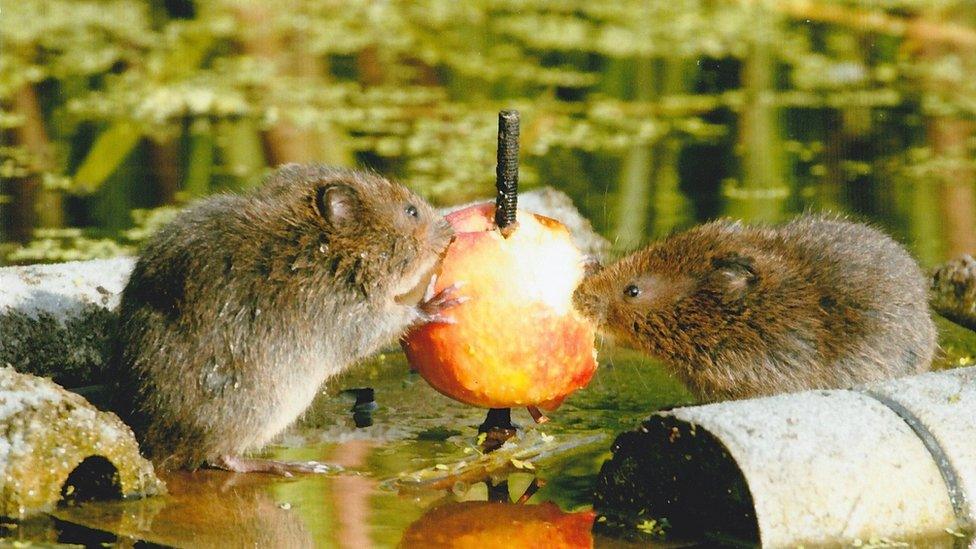Newport water vole's journey delights conservationists
- Published

A water vole has delighted conservationists by moving five miles (8km) from a marsh where the species is being reintroduced.
It was seen at Newport Wetlands - the first official water vole sighting outside Magor Marsh Nature Reserve.
Over the past four years, Gwent Wildlife Trust, external has been re-introducing water voles to the area after their numbers dwindled in the 1970s.
The trust said the sighting showed the voles were establishing themselves.
Water voles were once common in rivers, streams, ponds and marshes in the area.
But they disappeared because of changes in land management and the invasion of the non-native American mink in the 1970s - a trend reflected across the UK.

A new population of water voles is now "thriving" at Magor marsh and it is hoped the species will start to re-establish itself across Wales.
GWT said the fact a water vole had been spotted outside the marsh meant that was starting to happen.
Charlene Davies, project officer at the trust, said. "This charismatic mammal, made famous by Ratty in Wind in the Willows, is now a common sight at Magor marsh and we are absolutely delighted to hear that conservation efforts have resulted in the first confirmed sighting at Newport Wetlands and the first water vole to be recorded in an area outside our reserve in many years."

Water voles
The water vole is Britain's fastest declining wild mammal and has disappeared from many parts of the country where it was once common
They are much bigger than other voles
Water voles are distinguished from larger brown rats by their chestnut-brown fur, rounded nose, small, rounded ears that do not protrude from the fur and furry tail
They live along rivers, streams and ditches, around ponds and lakes and in marshes, reedbeds and areas of wet moorland
Look out for the signs of water voles such as burrows in the riverbank, often with a nibbled 'lawn' of grass around the entrance
Water voles like to sit and eat in the same place, so piles of nibbled grass and stems may be found by the water's edge
Cigar-shaped droppings may also be spotted
Source: The Wildlife Trusts, external
